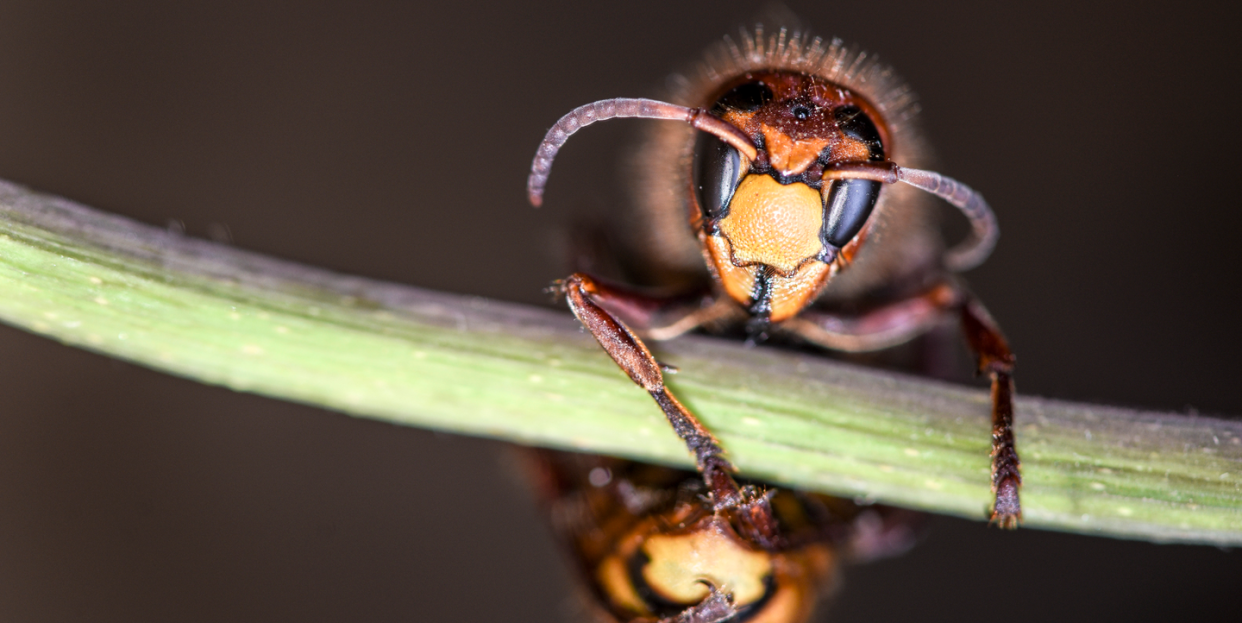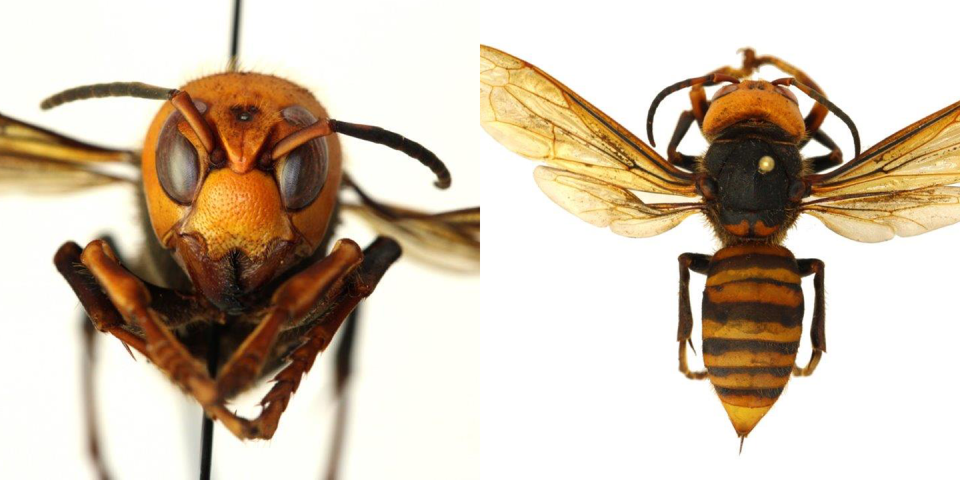Asian Giant “Murder Hornets” Have Been Spotted in the U.S.—And They Have a Powerful Sting

The Asian giant hornet, known as the “murder hornet,” has officially been spotted in Washington state.
The massive hornet can be devastating to honeybee populations. It also has an incredibly painful, toxic sting that can be harmful to humans.
Washington state officials say it’s unclear how the species arrived to North America and urge residents to report possible sightings of the invasive insect.
The biggest hornet on the planet has been spotted in the United States for the first time. The Washington State Department of Agriculture (WSDA) has confirmed at least four sightings of the Asian giant hornet, one of the most venomous insects in the world, near Blaine and Bellingham, Wash. Canada also reported sightings in British Columbia last fall.
Known as the “murder hornet,” scientists are worried about the “shockingly large” invader’s potential impact on U.S. honeybee populations if it’s not contained, according to a press release from Washington State University (WSU). These hornets are fierce predators and have the ability to slaughter an entire honeybee hive through decapitation in just a few hours, leaving piles of headless bee bodies behind.
They also have an incredibly painful, toxic sting. “If it becomes established, this hornet will have negative impacts on the environment, economy, and public health of Washington State,” the WSDA stated. Here’s everything you need to know about these “murder hornets,” their potential threat, and what to do if you think you’ve seen one.
What does the Asian giant hornet look like?

To put it simply, “they’re like something out of a monster cartoon with this huge yellow-orange face,” Susan Cobey, bee breeder with WSU’s Department of Entomology, said in the press release. The WSDA also calls out these distinguishing characteristics:
Usually 1.5 to 2 inches in length
Large orange or yellow head with prominent eyes
Black and yellow striped abdomen
Forms large colonies that usually nest in the ground
What does the Asian giant hornet’s sting feel like?
First, the good news: Asian giant hornets prefer to feast on other critters and “do not generally attack people or pets,” per the WSDA. They have powerful mandibles that, in addition to bees, can easily wipe out larger insects. The prey is usually killed by the queen hornet, and the demolished meal is taken back to her hive to feed younger hornets.
However, they can and do attack when they feel threatened—and their sting is extremely dangerous. The giant hornet has a quarter-inch long stinger that contains an enzyme mixture and neurotoxin that destroys tissue, according to National Geographic.
The stinger is so long, in fact, that it can even puncture a beekeeping suit. One beekeeper and entomologist who was assigned to exterminate a known hornet hive on Vancouver Island was attacked during his mission, The New York Times reported. Even through a pair of shorts, thick sweatpants, and a bee suit, the man endured seven stings—some of which drew blood. “It was like having red-hot thumbtacks being driven into my flesh,” he said.
In people who are allergic to bee or wasp stings, it can cause anaphylactic shock and, in some cases, be lethal. Even in people who have no allergies, multiple stings can be deadly, per the WSU release. The Times reports that the hornets kill up to 50 people a year in Japan.
Wait, how did the Asian giant hornet get to the United States? What should I do if I think I see one?
Typically, this hornet is found throughout all of Asia in forests and low mountains–spanning from India to Japan—and officials say it’s unclear how the species made its way to North America. “Insects are frequently transported in international cargo and are sometimes transported deliberately,” the WSU release said.
Because the aggressive hornet poses such a threat to honeybees, officials are doing everything they can to prevent its spread while the population is still small enough to be detected and eliminated.
WSU says the hornet was first spotted in December and will start to become more active in April—they’re “most destructive” during the late summer and early fall. If you think you’ve come across an Asian giant hornet in or near Washington state, do not go near it. “If you find a colony, do not attempt to remove or eradicate it,” the WSDA says. “Anyone who is allergic to bee or wasp stings should never approach an Asian giant hornet.”
Immediately report any possible sightings to the Washington State Department of Agriculture Pest Program at 1-800-443-6684, pestprogram@agr.wa.gov or online at agr.wa.gov/hornets.
Follow House Beautiful on Instagram.
You Might Also Like

